Versions Compared
Key
- This line was added.
- This line was removed.
- Formatting was changed.
What are actions?
When a rule is triggered, what it does is determined by actions defined inside of the rule. ARN currently supports following types of actions.
Send email
This action lets you select an email template along with the list of users that are supposed to receive this mail.
Users can be added in the form of
Jira users
Jira user groups
plain email addresses
Reply to & Email from parameters are used in the final email sent to the recipients. If 'Send email as Bcc' is checked, it will add all the user email addresses in bcc so that they are not transparent.
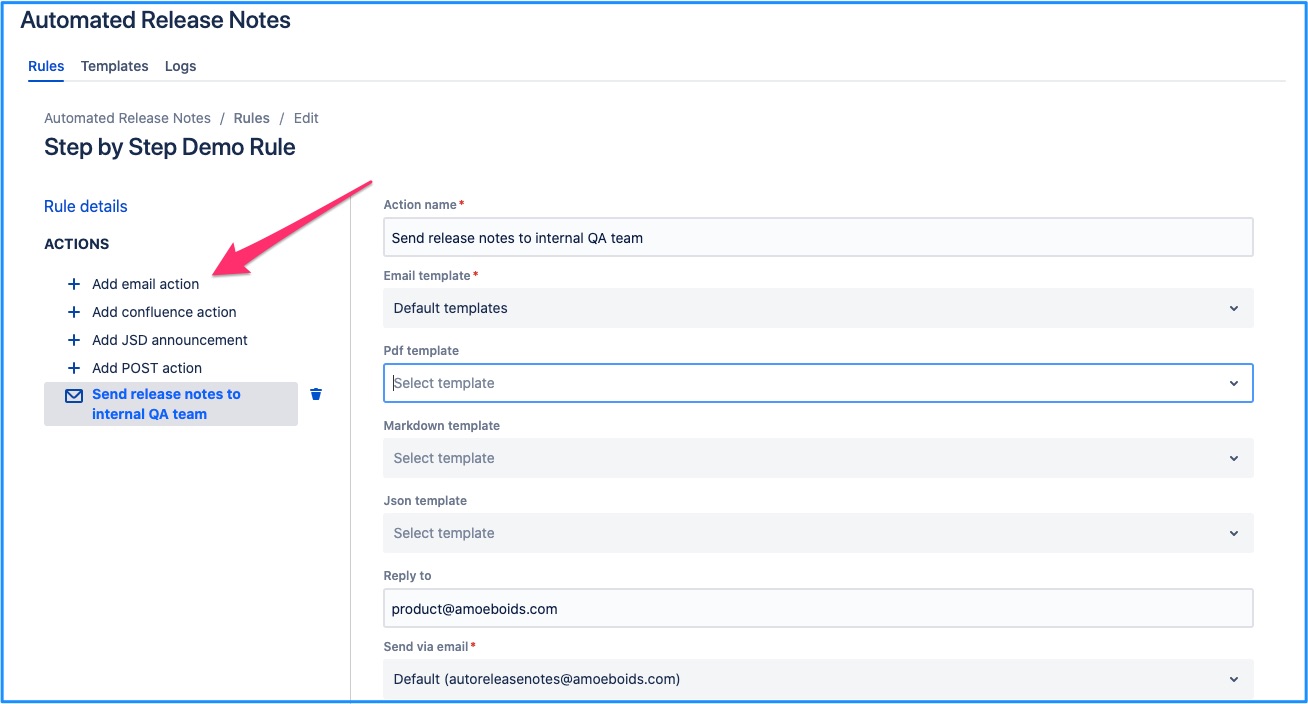
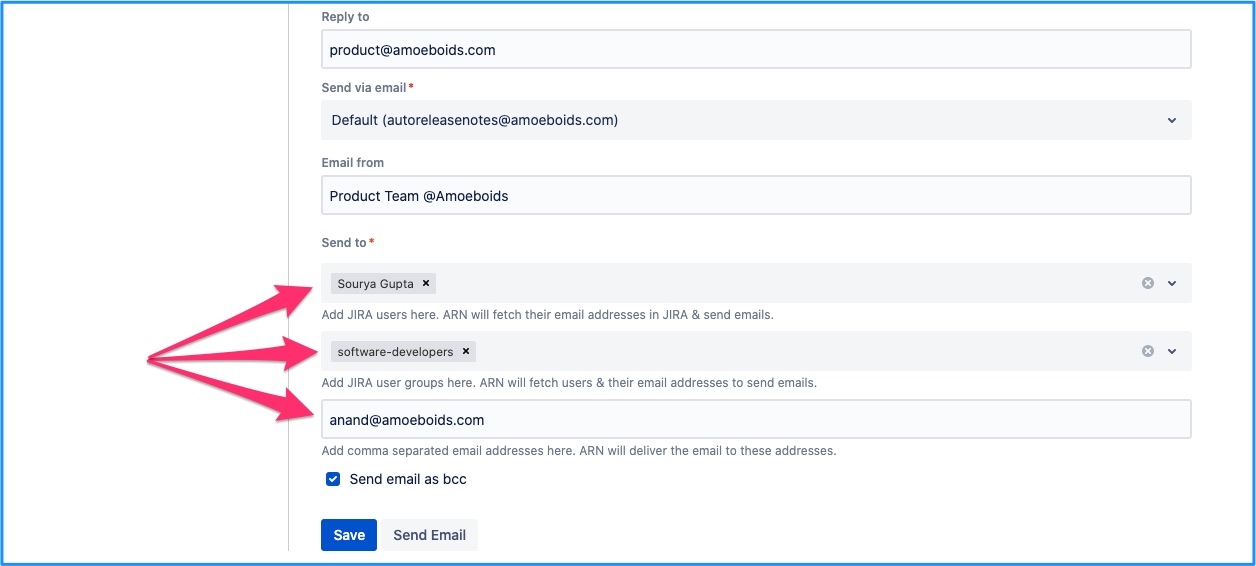
For cloud version of the app, it is possible to configure the email address from which ARN emails are generated.
Once you are done Setting up SMTP, that specific email address can be chosen from the email action - using the ‘Send via email’ selector.
Send email with pdf attachment
Release notes in PDF format can be attached to an email. Within the send email action (same as above), there is a pdf template selector. Rest of the action parameters remain same as that of email. At the time of rule execution, pdf is generated using the selected template & sent as an attachment to the release mail. This release mail is generated using the template set in 'Email template' dropdown.
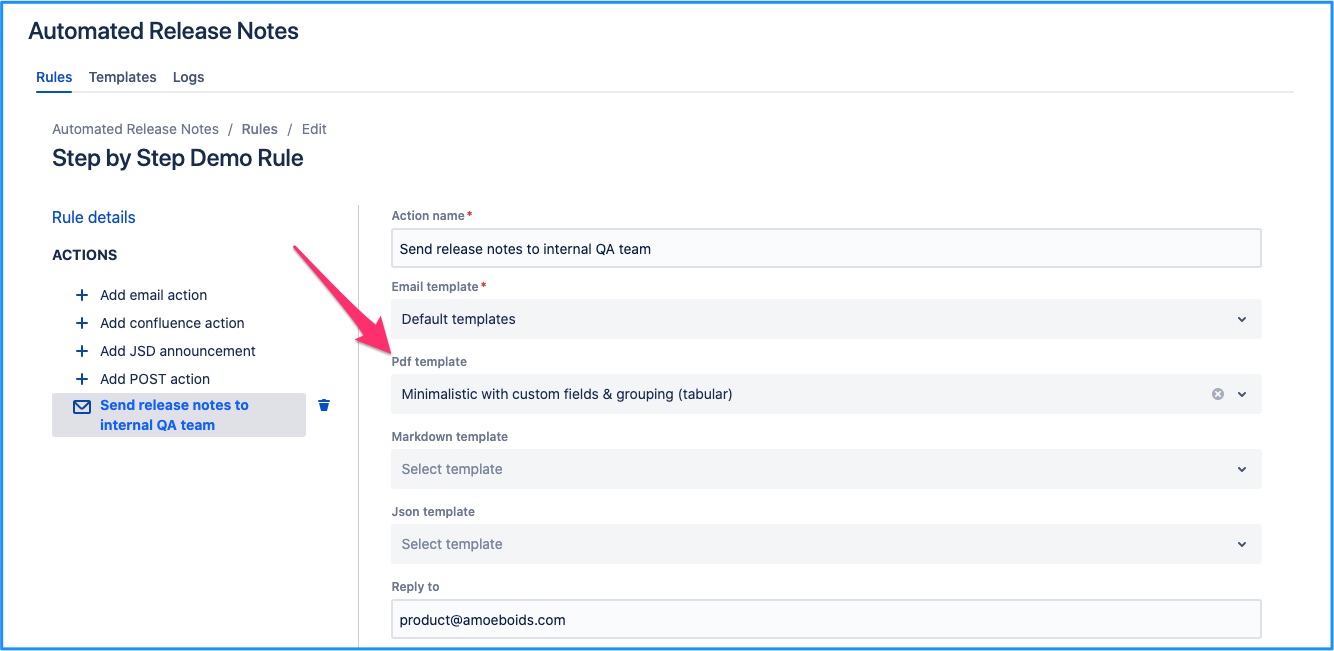
| Tip |
|---|
Here is how to save the PDF release notes directly to a cloud storage platform such as Google drive, Box, Dropbox etc - Integrations |
Send email with markdown attachment
Release notes in markdown format can be attached to an email. Within the action send email (same as above), there is a markdown template selector. Rest of the action parameters remain same as that of email. At the time of rule execution, markdown is generated using the selected template & sent as an attachment to the release mail. This release mail is generated using the template set in 'Email template' dropdown.

Send email with JSON attachment
Currently release notes in JSON format can be attached to an email. Within the action send email (same as above), there is a JSON template selector. Rest of the action parameters remain same as that of email. At the time of rule execution, JSON is generated using the selected template & sent as an attachment to the release mail. This release mail is generated using the template set in 'Email template' dropdown.
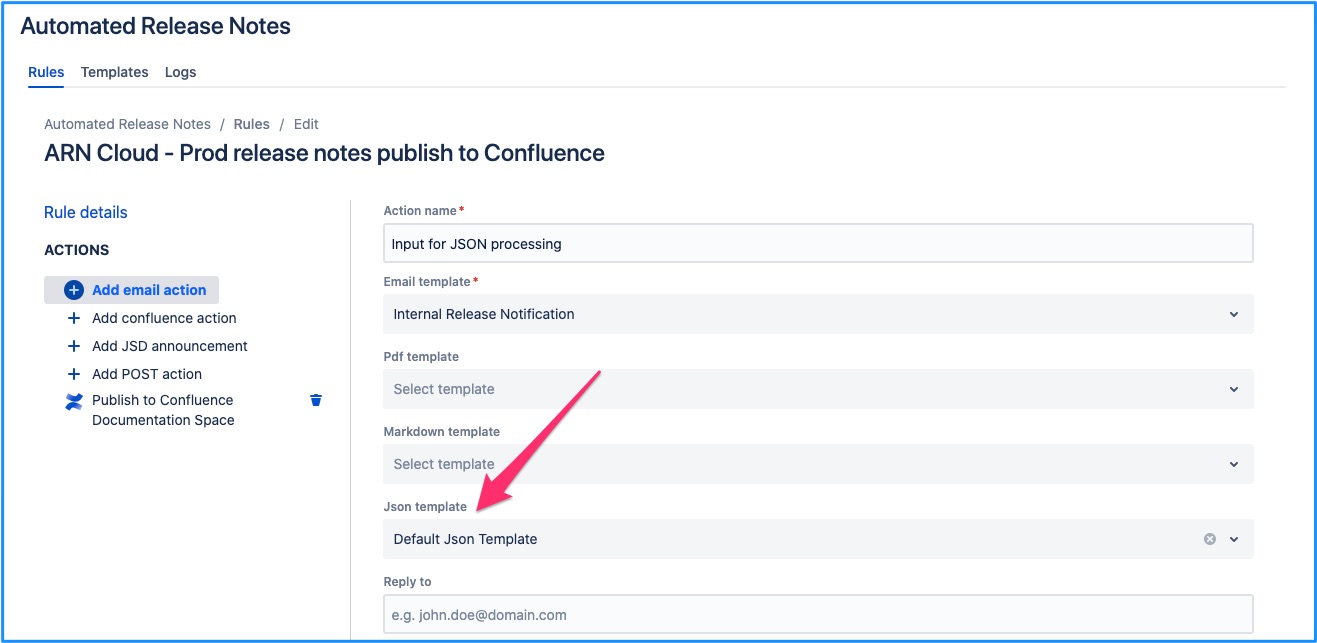
Publish to Confluence
Publish to Confluence action takes Confluence template as input parameter along with the space key & parent page id. While space key is mandatory, parent page id is not. If parent page id is not provided, the release note page will be created without a parent in Confluence.
Do keep in mind that if space key is not valid or if the parent page id is not valid, relevant errors will be shown in the logs & the action will fail.
There are two possibilities -
Create new Confluence page/blog
ARN will try to create a new Confluence page/blog & the action will fail if the page with same title already exists.
Update an existing Confluence page/blog
ARN will check if a page/blog with given title (based on Confluence template in that action) already exists
doesn’t exist - new Confluence page/blog will be created
does exist - existing Confluence page/blog will be updated
Append to existing page/blog
ARN will append release notes content to an existing page/blog. ‘Dynamic section end’ will be used to identify string before which content will be added. If it is left empty, then content is added to the bottom of the page
Prepend to existing page/blog
ARN will prepend release notes content to an existing page/blog. ‘Dynamic section start’ will be used to identify string after which content will be added. If it is left empty, then content is added to the start of the page
Multiple labels can be associated with confluence action. These labels will be used while creating/updating the page/blog in Confluence. Do note that space is not allowed within these labels.
Read this article to know how Confluence credentials are set up - Setting up Confluence
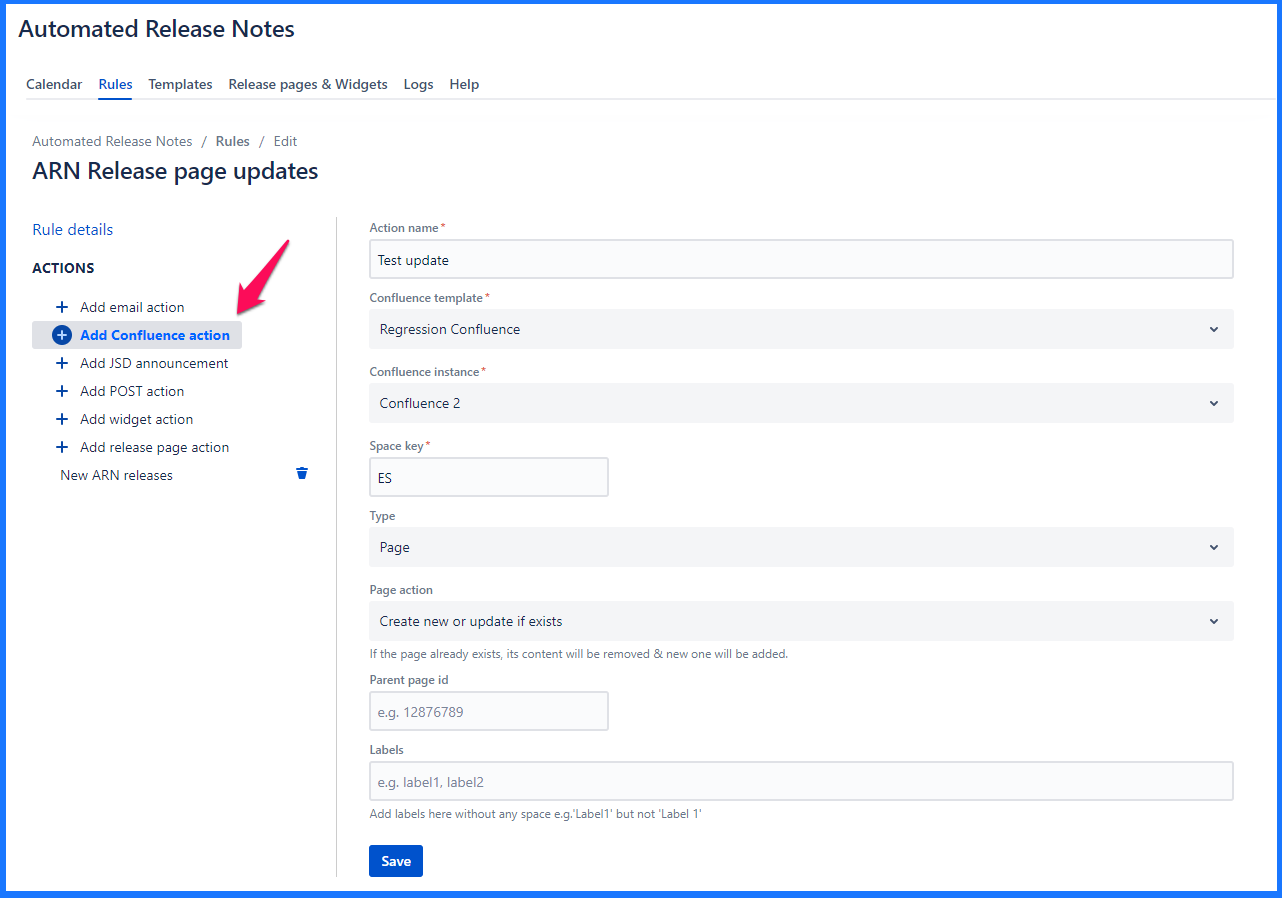
Jira service desk announcement creation
An announcement can be added to a specific project in Jira service desk. This announcement can be published from within the ARN action - JSD announcement. Expected parameters for this action include portal id along with the announcement template.
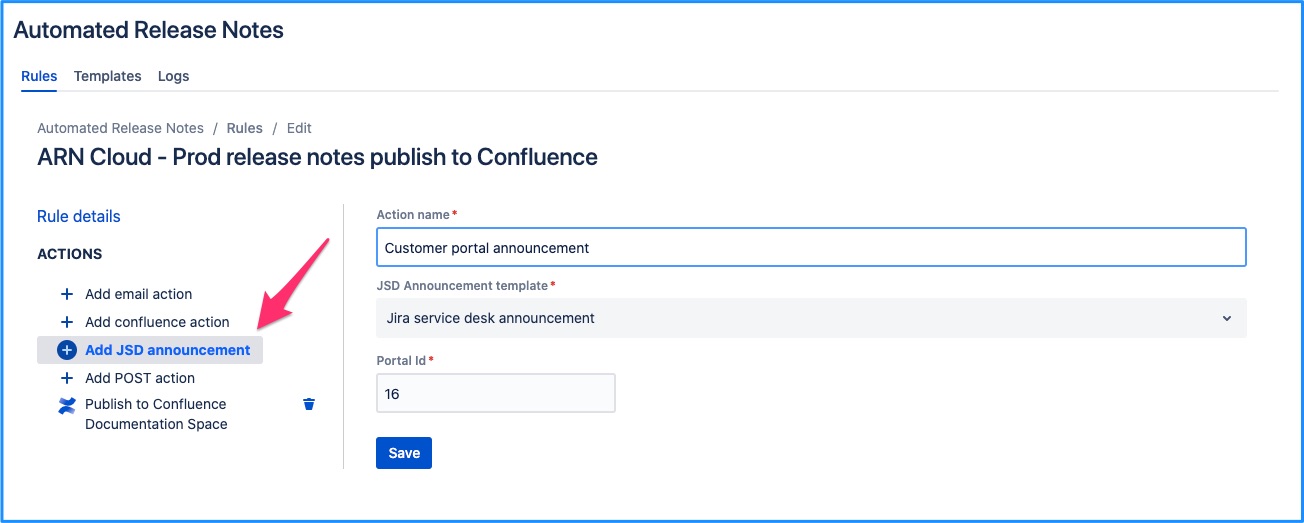
Here’s an article on Setting up Jira Service Desk
POST to pre-defined url (HTML or JSON)
In order to directly publish the release notes on a different platform or to further process them, ARN supports the possibility of POSTing the JSON or HTML to a pre-defined url. Depending on whether the endpoint requires authentication or not, you can enter username & password.
| Note |
|---|
You can preview the POST request payload using any online service such as https://webhook.site/ |
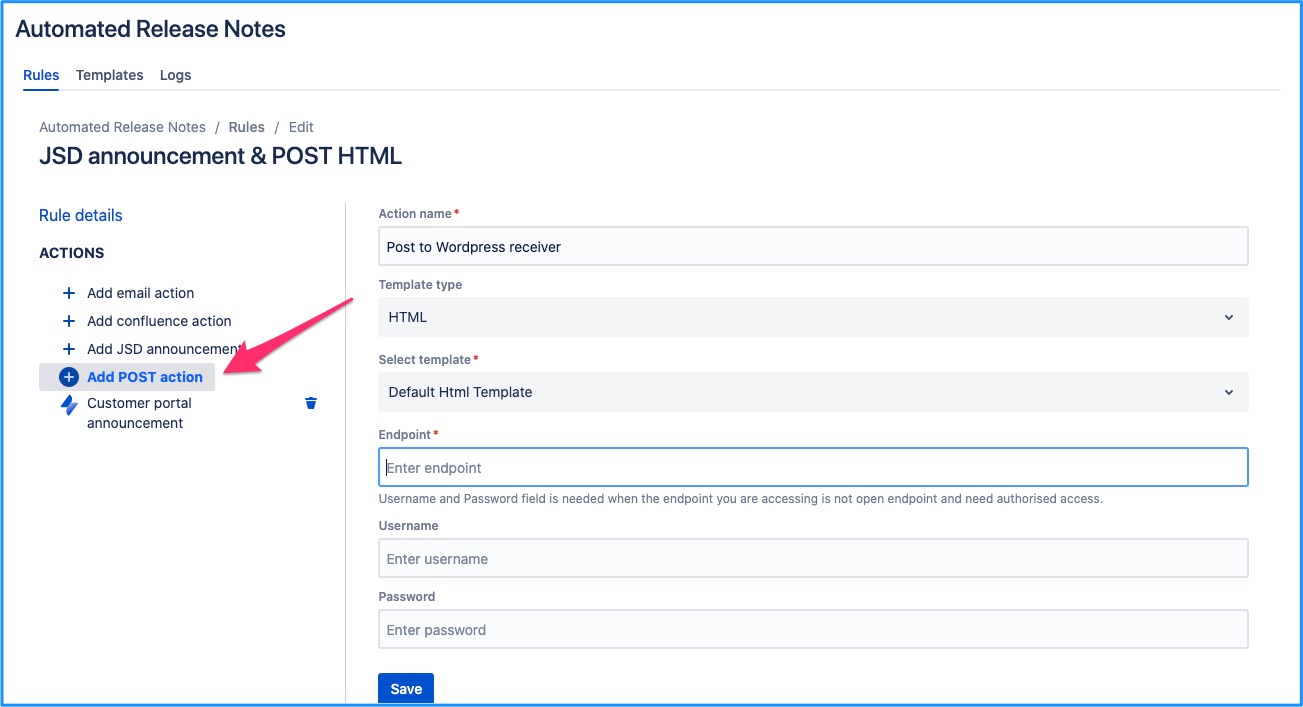
Create an entry in the release page or widget
Release page & widget actions are now available within ARN rules. Simply provide a name for the action & choose a corresponding release page/widget. That's it. Now every time this action is executed, a new entry (we call that a 'release') is created for that release page/widget. Content of this 'release' is dependent on the JQL you've configured for the release page/widget. More about that here.

On this page | ||||||||
|---|---|---|---|---|---|---|---|---|
|
| Iframe | ||||||||||||
|---|---|---|---|---|---|---|---|---|---|---|---|---|
|